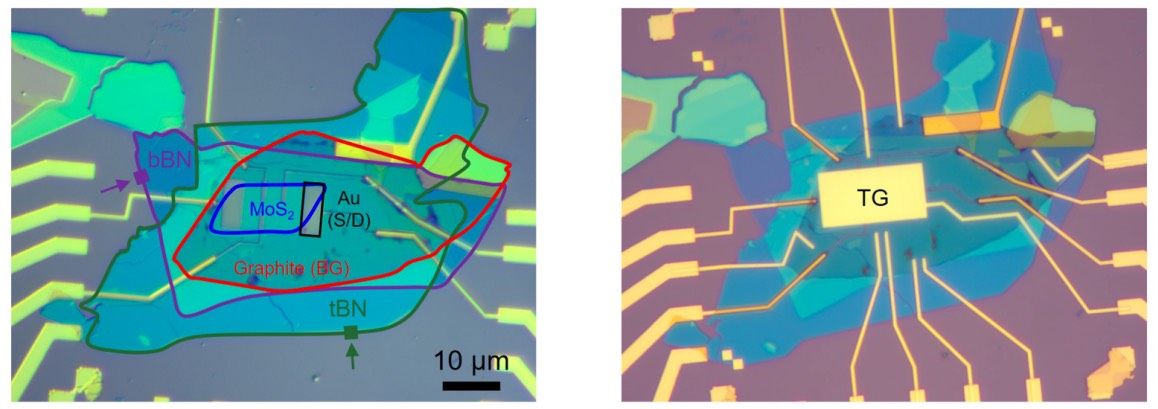Tingyu’s Paper has been accepted and published on Physical Review Research!
Breakthrough in Magnetoresistance Properties of MoS2 Unveiled by Barbaros Group
In a landmark study, we have made significant strides in understanding the magnetoresistance properties of bilayer molybdenum disulfide (MoS2), a material poised to revolutionize electronic devices and sensors. The team, led by prominent scientists in the field of material science, explored the properties of MoS2 encapsulated by hexagonal boron nitride, using a sophisticated dual-gated setup.

The research reveals an unexpected negative magnetoresistance at low magnetic fields (less than 0.5 Tesla), primarily attributed to the weak localization effect—a quantum phenomenon that enhances the electron’s ability to resist changes in its path due to disorder. This insight opens up new avenues for the development of high-performance electronic components that could operate efficiently in varying magnetic environments.
Further investigations by our team have demonstrated a consistent increase in the phase coherence length and mean free path with electron density, suggesting enhanced performance characteristics at higher electron densities. Interestingly, the displacement field showed no significant impact on these parameters, highlighting the unique properties of MoS2 as influenced by electron interactions rather than external tuning.
Additionally, temperature-dependent studies identified Coulomb scattering as the primary dephasing mechanism when lower spin-orbit split bands are involved in transport. This finding supports the concept of spin-polarized valleys, or ‘spin-valley locking’, where intrinsic spin-orbit coupling helps maintain spin states, offering a protective mechanism absent in conventional materials.
Barbaros group is excited to share these findings, which not only advance the understanding of two-dimensional materials but also suggest potential applications in next-generation electronic and quantum devices. The lab is currently seeking new students, researchers, and potential industrial partners to join in exploring the vast potential of these materials. This research promises to open doors to innovative technologies and foster collaborations that could shape the future of materials science. For those interested in joining or collaborating with our team, please contact us through our website or directly at barbaros@nus.edu.sg. Let’s innovate together!

